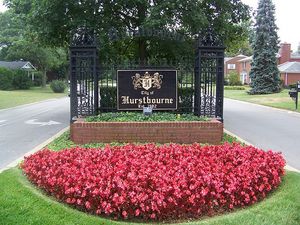The slim, sexy young female model, the macho male sports star, the housewife in the kitchen, the mature fatherly authority figure, the cute little girl, the stalwart GI, the dirt-encrusted little boy, the clueless, middle-aged woman driver. Wait just a dang minute! What about that last stereotype? You know, the blue-haired matron whose world consists of hairdressers, lunches with the “girls”, dangling jewelry and expensive clothing.
Several years ago, when I was regional ad manager of one of the largest insurance companies, we were all called together to corporate HQ to discuss the company’s schedule of upcoming TV ads. Our company had just added auto insurance to its product list, and we were asked to critique its first TV ad touting the new product before the commercial went out to the media.
The ad showed two middle-aged women in a car, gabbing happily together as the one who was driving backed out of her driveway. Suddenly, she knocked over her mailbox, almost hit a kid on a bike and banged into a tree. As the distressed women climbed out of the car, the soothing male voice-over announcer assured them not to worry, because our company’s new auto insurance covered the cost of repairs.
When the vice president asked for our opinions about the ad, most of my colleagues nodded the usual approval of blind loyalty, but I piped up to say I objected to the negative stereotype images. I added that I thought it was not ethically right nor good for business to portray the middle-aged women as silly caricatures who’d be forgiven for what could have caused a serious accident. Drawing on my experience with insurance ratings and coverages, I said the cost of the repairs for such a stupid accident would probably not be reimbursed.
Needless to say, my uncalled-for opinion didn’t earn me any points with our corporate bigwigs, and the ad appeared on TV screens within weeks. Oh, did I mention that our advertising department VP presiding over the meeting was a young woman, a 28-year-old protege of our company chairman? Talk about gender stereotypes!
Admittedly, there has been much progress in erasing the most blatant gender stereotyping in TV and print ads that prevailed in the early days of advertising. We’re seeing less of the stay-at-home, domestic “little wife” character, and more women portrayed in ads as successful in business, law, medicine, real estate, the military, police and other government careers.
With the advent of the home computer and ever-evolving sophisticated computer games, character gender differences are becoming even less pronounced. Today there are just as many super-heroines as there are super-heroes in the ads and in the content of their games. Even the once dominant male voice-overs now share the mike with strong, in-your-face female voices. Move over, Batman, and make room for Robotrixie.
The use of gender stereotypes in advertising has always been an effective marketing device, and there’s no indication it will ever change. A company that sells women’s clothing, hair dye or cosmetics isn’t likely to use male models, except as moon-eyed background images to the stunning female model closest to the camera.
Portrayal of the the stereotypical near-nude female model as a sex image will continue to be featured where they’ve always been the most effective, in ads for men’s products and services. This includes sports, cruise lines, men’s hair and sexual prowess restoration medications, casinos, entertainment and many other areas.
As they say in the TV ad business about stereotyping by gender, age, brains or body weight: “if it ain’t broke, it don’t need no fixin’.


